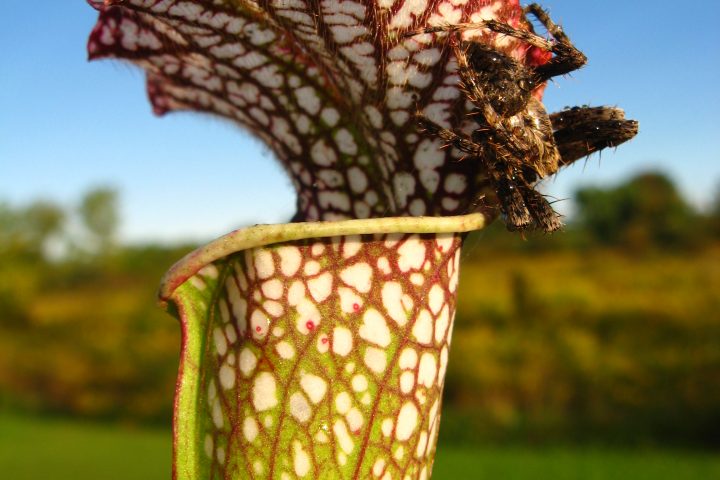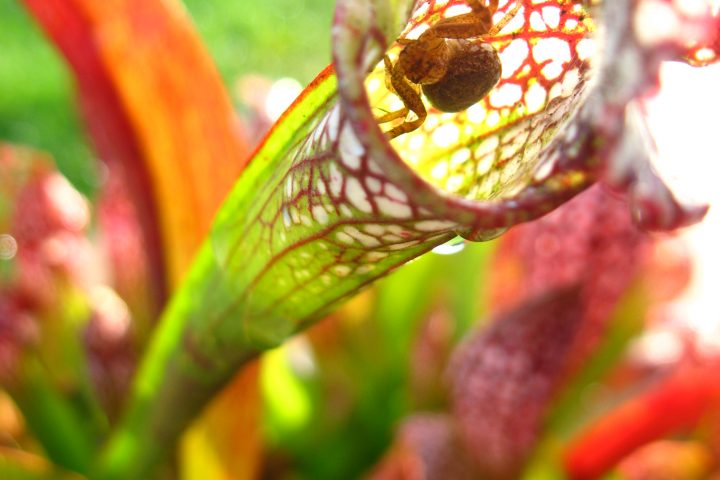When Nate Chetelat from Gnarly Farms, an urban homestead in Tampa, Fl., came over and told me that my pond area was being overrun by gotu kola I was upset. Not because I had a weed problem, but because I had purchased the ‘herb’ gotu kola for $5 the previous week and it wasn’t looking happy. I must give kudos to those marketing gotu kola – they got me.
In addition to purposefully growing gotu kola, in numerous raised beds I also grow other weeds including two types of purslane, dandelions, oxalis, stinging nettle and a type of lambsquarters called magenta spreen. The joy of growing these edibles is that without proper care they can grow like…weeds! Many of these plants I relocated or collected their seed from my yard and assigned them a position in my edible garden. After all, my acre is whimsical enough; I don’t need to have stinging nettle playing hide-and-seek with my company.
If you do not want to explore the fascinating and nutritious world of edible weeds, or for those who, like me, only want to cultivate small patch of weeds, here are some organic weed solutions.
An ounce of prevention
Unfortunately your yard is already a large bank of dormant and active weed seeds. Remove plants prior to them seeding. Seeds require light to germinate and some researchers have suggested that weeding at night may help reduce weed problems. This may work for a few species, but most weeds will still germinate if they are in the top centimeter of soil.

If weeds are not reproducing through seed, then they are by roots, rhizomes or runners. Those with tap roots have a large storage root. A new plant will grow from a small piece of root left in the ground. Some very invasive weeds can spread from segments of root.
Many weeds depend on their large roots or tubers for fuel and energy. If you remove the tops of the weeds in the springtime the roots will regenerate. It is better to dig them out or smother them when they are the weakest – just prior to flowering. This way their food reserves are at their lowest.
Manual removal can’t be dismissed. Removing the weeds as you see them come up will reduce your workload. If you have difficulty removing the roots intact, water the local area or pull them out after a rainstorm when the ground is easier to work with. For really cozy weeds, use a knife or screwdriver next to the deep root to loosen it before pulling.
While you may not be able to rid the area of weeds in one shot, the most critical time to reduce weed growth is the first month of germinating your desired seeds. After about four weeks the weeds can still become a problem, but your desired plants will have a much better chance of surviving their competitive rivals.
Stressed Out
One way to stress out weeds and kill them is to apply a salty border. Rock salt or table salt sprinkled on areas that a mower can’t reach will dry out all the plants the salt comes in contact with. Gardeners do warn that the salt can erode concrete surfaces and cause the land to be barren for long periods of time. The pro – no weeds, the con – no greens.
Another way to reduce weeds from spreading is to pour boiling water directly overhead. Over a few days the weeds will shrivel. What else were you going to do with that leftover water from boiling potatoes and pasta?
Dandelions, dock and plantains can be exterminated by draining pickle juice over them or by spraying vinegar. Common vinegar found at a grocery store contains 5% acetic acid, which is the active ingredient. Be forewarned, much like salt and boiling water, vinegar is also non-discriminatory – it will kill everything it comes in contact with.
Competition also causes stress on weeds. By planting ground covers, flowers or vegetables that naturally beat weeds for sunlight, water and nutrients, your weed problems will decrease. Growing cover crops in the fall eliminates weeds over time by protecting the bare soil. Another way that cover crops reduce weeds is their ability to improve soil quality. Most weeds are pioneer organisms – the first organisms to establish at a barren site. Beat them to the punch with cover crops.
Layers
Bare soil is the cause of most weed problems. My biggest problems are in uncommon walkways and areas where the hardscape isn’t close to another. Bare soil openly invites weeds to take up residency. By laying down mulches and protecting the soil, you can cut the potential for future weeds noticeably. Mulches including straw, cardboard, newspaper and shredded leaf mulch in the walking rows that is 2 to 3 inches thick works well. If weeds do pop through, pull them as you meander through your garden on the walk way. If the weeds start becoming aggressive in their growing habits you can take a weed flamer or weed wacker prior to adding another layer of mulch.
|
Mean Green Homemade Remedies Pick your ‘poison’. Here are three commonly used weed control formulas. Which one do you prefer? |
|||
| Solution | Vinegar | Salt | Soap |
| 1 | 1 gallon | 1 cup | 1 tbsp |
| 2 | 4 cups | ¼ cup | 1 tsp |
| 3 | 2 parts | None | 1 part |
Originally published in the July/August 2015 issue of Florida Gardening.



